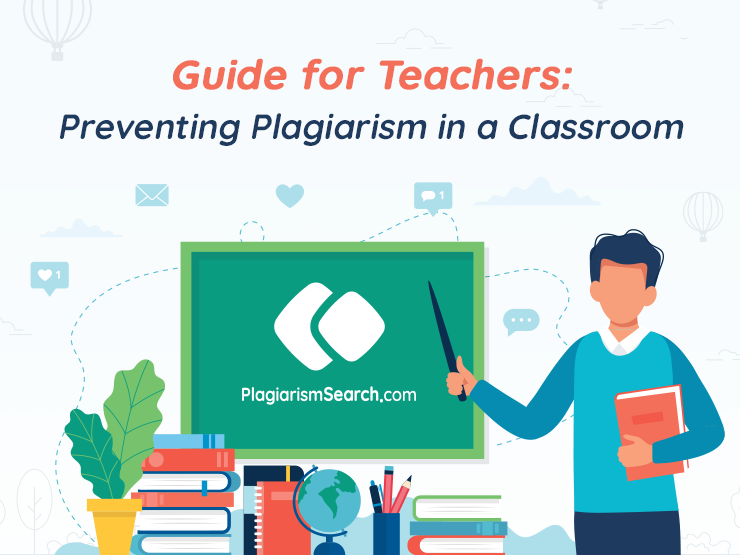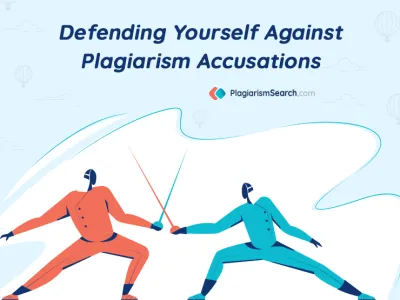
How Should Educators Deal with Plagiarism?
Have you checked your calendar? There is a special day coming on February 19! Who would ever have thought that there is a Plagiarism Prevention Day marked! Still, since 2015 it has been observed annually and it makes sense, doesn’t it? Especially now when the COVID-19 pandemic had made adjustments to a common routine of getting education around the world, it is vital for every teacher to promote the principles of academic integrity.
Think about your teachers! Have they encouraged your behavior based on honesty in studies? Were their attempts successful? Do you have any ideas how to change the change the attitude of the students and turn identifying plagiarism into a formal procedure that detects no non-original content at all? Although that sounds like an utopian idea, it is still necessary to take new steps to a new level in education.
Types of Cheating in Writing
There are more and more violations of different levels of severity in academics. The educators know how to tell if something is plagiarized. The punishments for different kinds of cheating can be more or less serious, and there is even a classification of plagiarism types for the teachers to know. Typically, plagiarism can be of the following types: accidental, direct, mosaic, paraphrase, or self-plagiarism.
- Accidental: plagiarizing without any deliberate intention to steal someone’s ideas, lack of referencing, wrong citations
- Direct: no citations in the written paper, rewriting without giving due credit to the actual authors
- Mosaic: no citations, collection of stolen ideas mixed in one text
- Paraphrase: no citations, mere transformation of the text with changed word order and synonymous vocabulary
- Self-plagiarism: no citations, submitting the same paper several times.
Forms of Plagiarism
There is another classification of plagiarism with more details. Giving explanations to what indecent students do in their papers, it can hint on how can students prevent committing plagiarism.
- Cloning – it is absolute copying of the work someone else did. Present-day plagiarism detection software makes it possible for the educators to trace even slight signs of plagiarism of cheating.
- Mixed plagiarism – there is a combination of original ideas and copied parts. Only some of the phrases are changed.
- Remixing – stitching the paraphrased materials to give them an original look.
- Recycling – it is self-plagiarism without direct copy-pasting. The student uses the same ides in a reworded text.
- Patchwork plagiarism – cited materials are mixed with ideas without citations.
- Mashup – copying various sources without referencing any of them.
How Can Educators Prevent Plagiarism in Their Daily Work?
- Raise the students’ awareness about the ownership rights and intellectual property
Plagiarism prevention is not possible if the students know nothing about intellectual property and consequences of academic dishonesty. Students need to develop respect to what other people have done in their research. It is really effective to give specific examples of plagiarism and what has happened to the offenders so that the students knew that they take risk when they plagiarize.
- Make assignments more challenging
For sure, if the teacher gives the same assignment every year, the students will easily find answers to all questions either online or in the works of the senior peers. Otherwise, if the task is original, the student will not be able to find the exact answer anywhere and that will make them work harder. Creative assignments are also a great means included in the list of solutions on how to prevent plagiarism.
- Create positive atmosphere in the classroom and online
Students are less inclined to cheating if they feel respect in the attitude from their teachers. If the instructor cares about academic success of everybody in the classroom, there will be no temptation to lie and deceive. Being acquainted with the teachers, a student mostly feels ashamed to cheat.
- Encourage the students to succeed and boost their confidence
If the students have sufficient knowledge and enough time to cope with the task, they will most probably be interested in trying to handle the tasks. Feeling empowered, they will be afraid of ruining the prospects of their future.
- Use reliable software for detecting plagiarism
If students can see a plagiarism report together with the paper, it motivates them to cite in a proper way and avoid copy-pasting.
- Punishing for outrageous cases of plagiarizing
If instructors do not respond to any cases of plagiarizing papers, the students will accept the principle of impunity and behave accordingly.
Practical Advice to Prevent and Discourage Plagiarizing at Schools
How should educators deal with plagiarism? Is it possible to take some measures which will make it more difficult for the students to cheat?
- Setting restrictions in writing tasks to cover only narrow topics
- Adding a requirement of personal observations and cases from personal experience included in the essays
- Citing both offline and online sources dated only of the latest years
- Asking the students to keep to a certain schedule of submitting assignments in parts: outline first, then the introductory part, section one, section two, section three, and conclusions. There should be fixed dates for submission. It is a great tip on how to teach students not to plagiarize.
- Arrangement of peer groups to work on one assignment
- Making a combination of writing tasks with assignments of other kinds (journals, reports, etc.)
- Giving a task to provide a brief summary of every used source
- Taking part in discussion forums
- Asking the students to share their ideas with peers
- Grading not only the final writing, but also the quality of research
These are great strategies for preventing plagiarism. Students will know the answer to the question ‘how do teachers detect plagiarism?’ If they are aware of all hazards, they will realize how serious their offence will be if they copy paste some content. It is also valuable to ask the students to sign a special document which will certify that the students promise to keep to the standards of academic integrity.
How can you prevent plagiarism? This is the question every teacher should ask themselves when it goes about online and offline writing tasks.
Are you a responsible parent of a student, an educator, or a student? Then you should know about various ways to prevent plagiarism in the classroom. For sure, pedagogical strategies should go beyond mere threatening, asking the students to do citing properly, or giving boring lectures on the effects of plagiarism. The students have not actually thought about the values of education and why integrity matters. Tell them about that! Set every student ready for success!
Happy Plagiarism Prevention Day!



